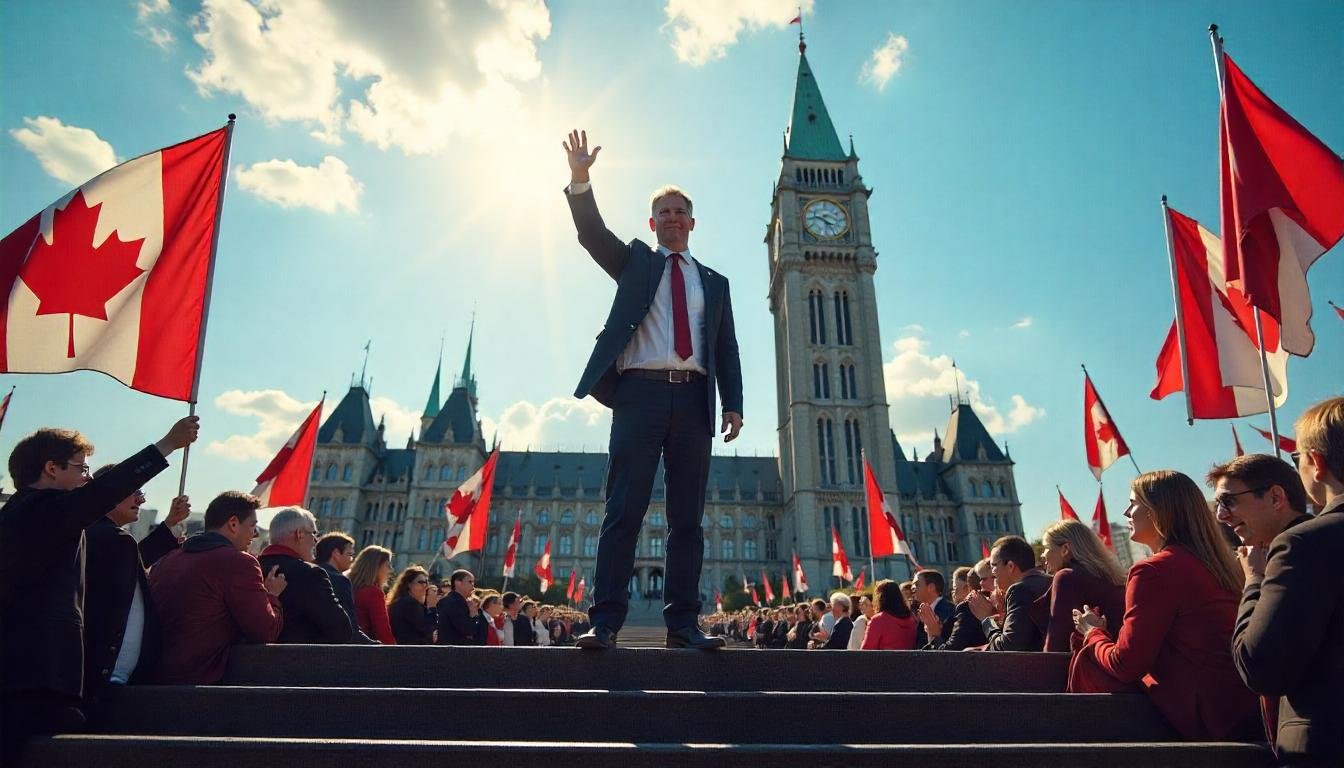
The Mark Carney Liberal leadership Canada Party, led by Mark Carney, is predicted to gain enough seats to form the next government in a radical shift in Canadian politics, falling just short of an outright majority. The Liberals are leading in 168 seats, four seats short of the 172 needed for a majority in the 343-seat House of Commons, according to the most recent data from Elections Canada, which are based on 99% of surveys.
Carney, who took over as prime minister in early March after Justin Trudeau resigned, is expected to stay in that position. This triumph represents a tremendous political comeback for the Liberals, who only months ago were more than 20 points behind the Conservatives in national opinion polls, even though they did not win an outright majority.
A Stunning Night for the Liberals — and a Brutal One for the Opposition
The most startling development of the evening was probably the predicted loss of Conservative leader Pierre Poilievre’s own seat in Carleton, Ontario, which was once regarded as a stronghold. Poilievre’s defeat is a stark reminder of the shifting political landscape in Canada. The 45-year-old ran on a platform of returning to “common sense politics,” but his message did not catch on with enough voters. He faced an exceptionally crowded ballot with almost 90 opponents, many of whom were independents advocating for electoral reform.
Mark Carney Liberal leadership Canada, Jagmeet Singh, the head of the New Democratic Party (NDP), has also lost his seat, adding to the political upsets of the evening. Once regarded as a rising star in Canadian politics, Singh came in third place in his riding, behind the Liberal and Conservative contenders. The NDP’s declining national support, which is down by over 12 percentage points from the last election, is reflected in this defeat.
With only seven seats in the lead and only roughly 6% of the national vote announced thus far, the NDP will have a small presence in the House of Commons. For a party that formerly controlled the balance of power in minority parliaments, it is a dramatic drop.
The Numbers: A Shift Toward the Big Two
One thing has become evident from this election: the Liberals and Conservatives are becoming more and more opposed in Canada’s political scene. With both party receiving over 40% of the national ballots, they have both made significant gains in the popular vote. Together, they are expected to secure around 90% of all parliamentary seats, marking a significant departure from the power of smaller parties.
With a lead in 23 ridings in Quebec and the Green Party leading in only one, Bloc Québécois is nevertheless well-represented in the region. However, neither party’s position has changed all that much since the last election.
The two big parties’ dominance has once again been accentuated by Mark Carney Liberal leadership Canada’s first-past-the-post election system, which elects the candidate who receives the most votes in a district. The NDP and Bloc are predicted to win just roughly 2–3% of the total seats, even though they each received more than 6% of the national vote.
Ontario and Quebec Hold the Keys
A major factor contributing to the Mark Carney Liberal leadership Canada lead is their impressive showing in Ontario and Quebec, which together hold almost 60% of all Commons seats. The Liberals have strengthened their traditional base of support by winning most of the ridings in both provinces.
In British Columbia, where the two major parties are almost tied, the Conservatives are doing well and have maintained their position in Alberta.
A Surge in Voter Engagement
Initial turnout figures indicate a positive increase in public participation. Approximately two-thirds of all eligible voters cast ballots, which is comparable to participation rates in 2015 and 2019 and higher than the previous federal election in 2021. According to Elections Canad ,Mark Carney Liberal leadership Canada a, almost 7 million Canadians cast ballots in advance, breaking the previous record for early voter turnout.
What’s Next?
Now that Mark Carney Liberal leadership Canada has been retained as prime minister, the focus is on how the Liberals will lead without a definite majority. To pass legislation, they could have to reach out to independents or minor parties. Even if they narrowly missed their final objective, the Liberals have come out stronger under Carney’s leadership—especially after the difficult ascent they had to endure earlier this year.
In the meantime, concerns regarding Singh’s and Poilievre’s future party leadership are raised by their separate defeats. After everything is said and done, Canada will likely go through a period of political reorientation and possibly even reform.
Given that the first-past-the-post system has once again sparked concerns about equitable representation, would Carney seek electoral reform? And after such a momentous evening, how will the opposition parties reorganise?
Mark Carney Liberal leadership Canada has been given the mandate to lead, but not unbridled authority, since Canadians have, for the time being, made their opinions heard and opted for stability over upheaval. Although the future remains unknown, one thing is certain: a new era in Canadian politics has begun.